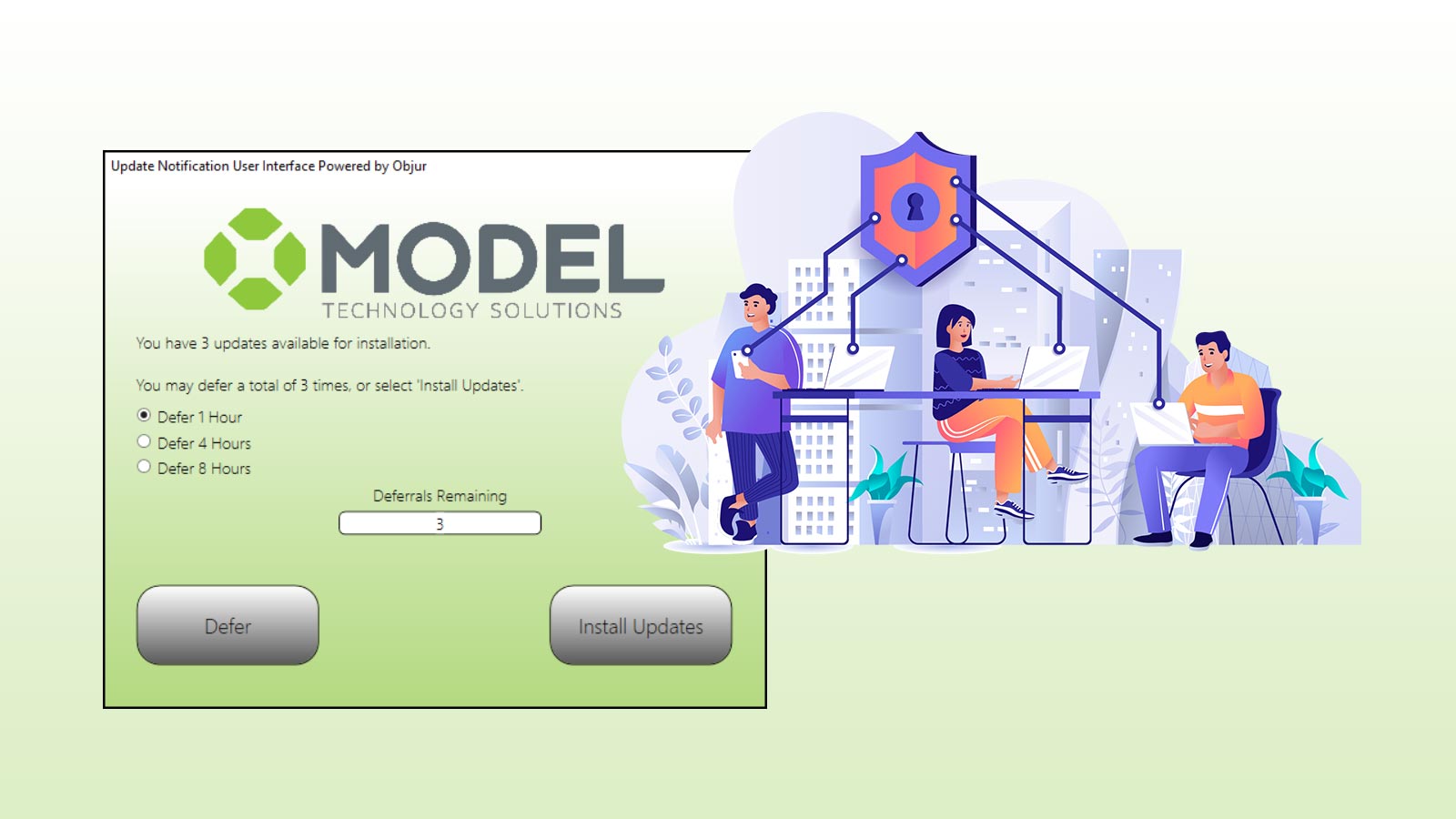It’s all about the boot, not just the patch. Endpoint patching only increases security when the end user reboots and applies the update to their machine.
Now, in the world of 2003 where everyone had a desktop and a 9-5 job, this wasn’t a problem. People generally turned their machine off and on once a day, at least when they went home.
However, times have changed. With the prevalence of laptop computers, tablets, mobile devices, and a remote workforce, no longer do we have such common restart patterns as the good old days when Clippy was still giving us advice in Word.
Today, end users might go weeks without restarting. Maybe a month. Who knows? What that ultimately means is that the diligence of your endpoint patching team, the late nights and early mornings to push updates to your machines, is all for naught if that end user won’t restart.
Frustrating, we know. And let’s face it – you don’t have the time or manpower to send your IT techs scurrying off after every end user who seems to have the restart endurance of an ultra-marathoner and the email responsiveness of your grandfather.
It’s not just a matter of manpower – endpoint security is on the line. Unpatched endpoints are the number one source of infrastructure vulnerabilities. Endpoints, as frustrating as it is, don’t go from unpatched to patched until they restart and apply the patches needed to stay compliant and up to date.
If a data breach happens, it’s not the end user who gets called into the boss and (maybe) has to find another job – it’s the IT team, even when their patching delivery was flawless and up to date as far as they could control.
Update Notification User Interface As A Security Tool
These are some types of problems our Update Notification User Interface (UNUI) tool can solve. The UNUI tool is a light-weight software that standardizes restarts, improves admin control, and gives end-users customizability and convenience of picking when and how they want their computer to restart and apply the necessary patch.
The UNUI tool comes packed with many features for many different users up and down the ranks at a company. Some of those features include:
- Reminding end users at regular intervals to restart their machine to apply a patch or multiple patches
- Allows users to select when patches install, ensuring they meet your deadlines while giving them the ability to regulate interruptions
- Allowing end users to temporarily defer restarts so that their computer won’t randomly restart during their big presentation
- Empowering admins to set the number of deferrals allowed for different user groups
- Providing admins a centralized platform for management of endpoint restarts
- Tracking how many endpoints have been restarted, how many have not, which ones, plus other user behavior metrics
- Adding white-label branding so that companies can maintain a united look and feel across their endpoints
When we first created UNUI, we thought it would primarily be a compliance tool. However, what we heard from our customers who actually used it on the ground level is that, while it is helpful for compliance, another huge application is in security.
All these features are purposed toward one goal: getting users to restart their computers conveniently and efficiently, apply their patches, and increase endpoint compliance and security.
UNUI reduces the “attack surface area” which a malware or ransomware attack could land. Less unpatched endpoints means greater security and less likelihood of the worst-case happening.
Ultimately, UNUI drastically increases endpoint restart turnover which, in the end, results in a more secure infrastructure.
Some of the other benefits of the UNUI tool that we’ve seen in our current customers are:
- Improved experience and customizability for the end users
- Improved data aggregation and reporting
- Increased feelings of and tangible control for CIOs and admins concerned with endpoint security
- Reduced help-desk tickets and, as a result, reduced resource overhead allocated to troubleshooting
- Improved IT team and infrastructure efficiency
Air Methods Case Study
Air Methods is a medical air-transport company out of Denver, Colorado. They use in-flight computer technology, and so patching efficiency and technological readiness is literally a life-or-death necessity for them.
Air Methods uses UNUI in their infrastructure to allow them to set regular intervals for patching their endpoints.
Instead of crossing their fingers that their computer will not decide to restart in the middle of a life flight, administrators set their endpoints to aggregate patches and restart when they know that the computers will not be in use.
Doing so ensures that the endpoints will be patched, online, secure, and ready to go when the little red light goes on and the team heads out to save a life.
Learn More About UNUI and Schedule a Demo
UNUI is a low-cost, resource-lean software option for improving security in your infrastructure and getting a bump in user experience to boot. With all the money that companies spend on getting endpoints patched, not having a solid reboot strategy is a gaping hole in any endpoint patching strategy. And that’s where UNUI comes in.
Recently we created a video demo of the software for users and possible users to get an under-the-hood look at the software. You can watch that here:
Or if you’re interested, our team would be happy to do a live demo with you and answer questions one-on-one. Feel free to reach out using our contact us page and let us know you’re interested in UNUI. We’d love to show it off.
And always remember, friends: It’s all about the ‘boot, not just the patch!
